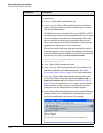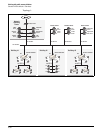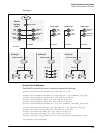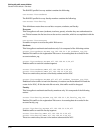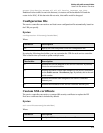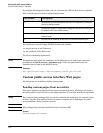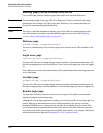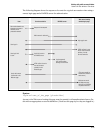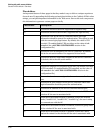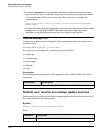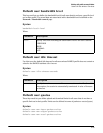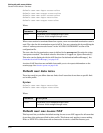
Working with public access attributes
Colubris AV-Pair attribute - Site values
Hosting pages on an external Web server
Use the following values to reference pages that reside on an external Web server.
Note The maximum length of any page URL is 512 characters. If this is exceeded (when using
placeholders for example), the URL is truncated. Therefore, it is recommended that you
specify the most-important placeholders first.
Note The service controller maintains a separate copy of the URLs for external pages for each
user. This means it is possible to provide different pages for each user. See Displaying
custom welcome and goodbye pages on page 8-14.
Welcome page
welcome-url=URL_of_page[placeholder]
The user is authenticated, so the welcome page can be located on any URL reachable by the
user.
Login error page
login-err-url=URL_of_page[placeholder]
Access to the Web server hosting this page must be granted to all unauthenticated users. Do
this with an appropriate access list definition. (Users can see this page before they are logged
in.)
if the radius server denies user authentication, this is used instead of an error being presented
on the login page.
Goodbye page
goodbye-url=URL_of_page[placeholder]
Access to the Web server hosting this page must be granted to all unauthenticated users. Do
this with an appropriate access list definition. (Users see this page after they are logged out.)
Remote login page
Use this value to redirect users to a remote server to log in to the public access interface
instead of using the internal login page.
Although the remote login page feature enables you to host the public access login page on a
remote Web server, authentication of users is still performed by the service controller
through a RADIUS server or using the local user list. To accomplish this, the remote Web
server must send user login information back to the service controller. There are two ways
this can be done: basic remote login (as described in this section), or by using the NOC-based
authentication feature (described in Appendix D: NOC authentication).
9-44



